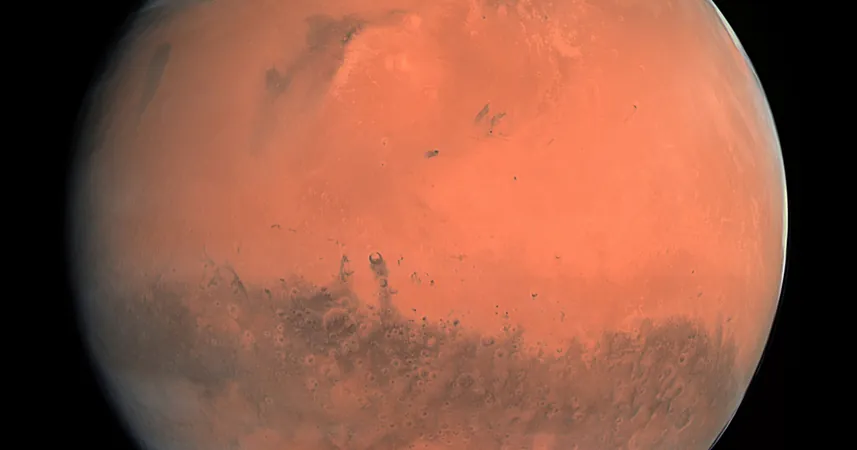
Astonishing New Study Reveals Ancient Water Shaped Mysterious Mounds on Mars!
2025-01-23
Author: Sarah
A groundbreaking British study has unveiled the secret behind thousands of mysterious mounds scattered across the barren plains of Mars, suggesting they were formed by ancient water. This revelation, funded by the UK Space Agency, sheds light on a Martian history that dates back billions of years.
The research team, led by Dr. Joe McNeil from London’s Natural History Museum in collaboration with The Open University, utilized high-resolution imagery and compositional data from orbiters to investigate the geology of these enigmatic formations. The mounds, some reaching heights of up to half a kilometer, are thought to be remnants of ancient highlands that once loomed over landscapes now mostly eroded away—an area roughly equivalent to the size of the UK.
So what did the researchers find? The mounds are composed primarily of clay minerals, indicating that the rocky terrain was once saturated with water, an essential component for the development of life as we know it. These clay deposits feature distinct geological signatures, sandwiched between older, non-clay layers below and younger, non-clay layers above, each representing significant events in Mars’ climatic and geological history.
Dr. McNeil expressed his excitement about the findings, saying, "These mounds are incredibly significant as they preserve an uninterrupted history of water in this region through continuous rocky outcrops. They represent a prime target for future missions aiming to determine if Mars ever harbored an ocean and whether life existed on our neighboring planet."
Adding another layer of intrigue, the study linked the mounds to Oxia Planum, a promising plain that’s set to be the next destination of the European Space Agency's Rosalind Franklin rover, scheduled to launch in 2028. This mission aims to uncover traces of past and present life, providing a crucial connection to the ancient Martian landscape.
As scientists continue to unravel Mars’ rich history, they are piecing together the story of a planet that may have once held the conditions necessary for life. "Mars serves as a model for what the early Earth could have looked like," Dr. McNeil explains. "With its lack of plate tectonics, much of Mars' ancient geology remains intact, allowing us to better understand our own planet's history and the origins of life itself."
This fascinating study not only brings us closer to understanding our cosmic neighbor but also hints that the quest for extraterrestrial life may be more than just a distant dream. With upcoming missions poised to explore these mounds further, the excitement surrounding the potential discoveries grows day by day! Stay tuned, as Mars might just hold the keys to the universe’s greatest mysteries.





 Brasil (PT)
Brasil (PT)
 Canada (EN)
Canada (EN)
 Chile (ES)
Chile (ES)
 Česko (CS)
Česko (CS)
 대한민국 (KO)
대한민국 (KO)
 España (ES)
España (ES)
 France (FR)
France (FR)
 Hong Kong (EN)
Hong Kong (EN)
 Italia (IT)
Italia (IT)
 日本 (JA)
日本 (JA)
 Magyarország (HU)
Magyarország (HU)
 Norge (NO)
Norge (NO)
 Polska (PL)
Polska (PL)
 Schweiz (DE)
Schweiz (DE)
 Singapore (EN)
Singapore (EN)
 Sverige (SV)
Sverige (SV)
 Suomi (FI)
Suomi (FI)
 Türkiye (TR)
Türkiye (TR)
 الإمارات العربية المتحدة (AR)
الإمارات العربية المتحدة (AR)